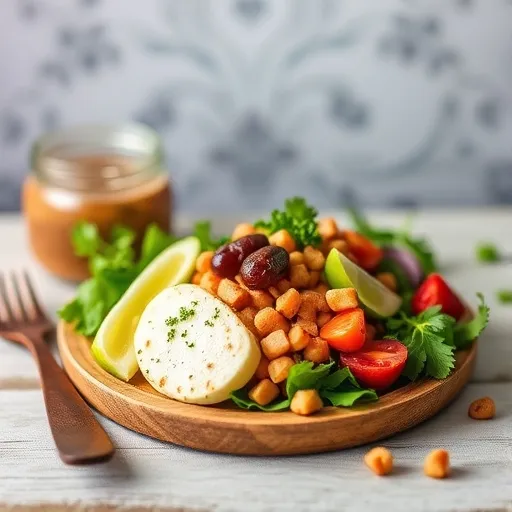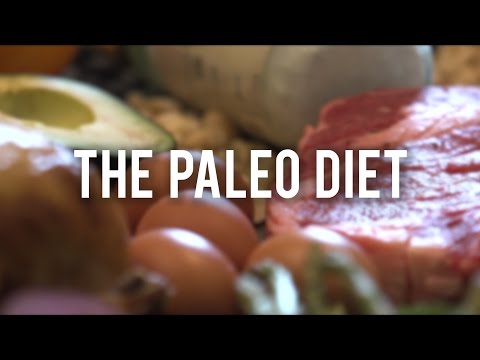The paleo diet has gained immense popularity over the years as a way to improve health, lose weight, and embrace a more natural way of eating. But what exactly is the paleo diet, and how can you get started? In this comprehensive guide, we’ll explore everything you need to know about the paleo diet, including its benefits, meal plans, and answers to frequently asked questions.
What Is the Paleo Diet?
The Paleo Diet, also known as the Caveman Diet or Stone Age Diet, is based on the idea of eating like our ancestors did during the Paleolithic era. This means consuming whole, unprocessed foods that were available to hunter-gatherers, such as lean meats, fish, fruits, vegetables, nuts, and seeds. The diet excludes modern processed foods, grains, dairy, and legumes. The philosophy behind the Paleo Diet is that our bodies are better adapted to the foods our ancestors ate, and that modern diets contribute to chronic health issues like obesity, diabetes, and heart disease.
Benefits of the Paleo Diet
1. Weight Loss
The paleo diet emphasizes whole, nutrient-dense foods that are naturally lower in calories and higher in fiber. This can help you feel fuller for longer, reducing the likelihood of overeating.
2. Improved Digestion
By eliminating processed foods and focusing on natural, whole foods, the paleo diet can improve gut health and reduce digestive issues like bloating and constipation.
3. Better Blood Sugar Control
The paleo diet avoids refined sugars and processed carbohydrates, which can help stabilize blood sugar levels and reduce the risk of type 2 diabetes.
4. Reduced Inflammation
Many foods included in the paleo diet, such as fatty fish, nuts, and leafy greens, are rich in anti-inflammatory compounds. This can help reduce chronic inflammation, which is linked to many diseases.
5. Increased Energy Levels
By providing your body with high-quality nutrients, the paleo diet can boost energy levels and improve overall well-being.
Paleo Diet Meal Plan
Here’s a sample 7-day paleo diet meal plan to help you get started:
Day 1
- Breakfast: Scrambled eggs with spinach and avocado.
- Lunch: Grilled chicken salad with mixed greens, cherry tomatoes, and olive oil dressing.
- Dinner: Baked salmon with roasted sweet potatoes and steamed broccoli.
Day 2
- Breakfast: Smoothie with almond milk, berries, and a scoop of protein powder.
- Lunch: Turkey lettuce wraps with sliced bell peppers and guacamole.
- Dinner: Beef stir-fry with zucchini noodles and sesame seeds.
Day 3
- Breakfast: Paleo pancakes made with almond flour and topped with fresh fruit.
- Lunch: Tuna salad with mixed greens, cucumber, and olive oil.
- Dinner: Roasted chicken with butternut squash and Brussels sprouts.
Day 4
- Breakfast: Omelet with mushrooms, onions, and diced tomatoes.
- Lunch: Shrimp and avocado salad with a lime vinaigrette.
- Dinner: Pork chops with mashed cauliflower and sautéed green beans.
Day 5
- Breakfast: Chia pudding made with coconut milk and topped with nuts.
- Lunch: Grilled salmon with a side of roasted vegetables.
- Dinner: Spaghetti squash with marinara sauce and ground turkey.
Day 6
- Breakfast: Sweet potato hash with eggs and diced bell peppers.
- Lunch: Chicken and vegetable soup.
- Dinner: Grilled steak with a side of asparagus and a baked sweet potato.
Day 7
- Breakfast: Paleo muffins made with almond flour and blueberries.
- Lunch: Cobb salad with hard-boiled eggs, avocado, and bacon.
- Dinner: Baked cod with a side of roasted carrots and parsnips.
Paleo Diet Food List
Foods to Eat
The paleo diet emphasizes whole, unprocessed foods that our ancestors would have eaten. Here’s a detailed list of foods you can enjoy:
- Proteins:
- Grass-fed beef, lamb, and bison.
- Free-range poultry like chicken and turkey.
- Wild-caught fish such as salmon, mackerel, and sardines.
- Eggs, preferably from pasture-raised chickens.
- Vegetables:
- Leafy greens like spinach, kale, and Swiss chard.
- Cruciferous vegetables such as broccoli, cauliflower, and Brussels sprouts.
- Root vegetables like carrots, sweet potatoes, and beets.
- Other vegetables including zucchini, bell peppers, and cucumbers.
- Fruits:
- Berries like blueberries, strawberries, and raspberries.
- Apples, oranges, and bananas (in moderation due to their sugar content).
- Tropical fruits such as mangoes, pineapples, and papayas.
- Healthy Fats:
- Avocados and avocado oil.
- Olive oil and coconut oil.
- Nuts like almonds, walnuts, and macadamia nuts.
- Seeds such as chia seeds, flaxseeds, and pumpkin seeds.
- Herbs and Spices:
- Fresh or dried herbs like basil, oregano, and thyme.
- Spices such as turmeric, garlic, ginger, and cinnamon.
Foods to Avoid
To stay true to the paleo diet, avoid the following:
- Grains:
- Wheat, rice, oats, barley, and corn.
- Products made from grains, such as bread, pasta, and cereal.
- Legumes:
- Beans, lentils, chickpeas, and peanuts.
- Soy products like tofu and tempeh.
- Dairy:
- Milk, cheese, yogurt, and ice cream.
- Some people include grass-fed butter or ghee in moderation.
- Processed Foods:
- Packaged snacks, chips, and crackers.
- Fast food and frozen meals.
- Refined Sugars:
- Candy, soda, and pastries.
- Artificial sweeteners and high-fructose corn syrup.
- Artificial Additives:
- Preservatives, food colorings, and flavor enhancers.
Paleo Diet Rules
The paleo diet is more than just a list of foods—it’s a set of principles designed to promote health and well-being. Here are the key rules to follow:
- Eat Whole, Unprocessed Foods:
- Focus on foods that are as close to their natural state as possible. Avoid anything that comes in a box or has a long list of ingredients.
- Avoid Grains and Legumes:
- Grains and legumes contain anti-nutrients like lectins and phytates, which can interfere with nutrient absorption and cause digestive issues.
- Eliminate Dairy:
- Dairy is excluded because it can cause inflammation and digestive problems for many people. Some paleo followers include grass-fed butter or ghee in moderation.
- Prioritize High-Quality Proteins:
- Choose grass-fed, pasture-raised, and wild-caught options whenever possible. These are higher in nutrients and free from antibiotics and hormones.
- Include Healthy Fats:
- Incorporate fats from sources like avocados, nuts, seeds, and olive oil. These fats are essential for brain health and hormone production.
- Limit Sugar Intake:
- Avoid refined sugars and opt for natural sweeteners like honey or maple syrup in moderation. Excess sugar can lead to weight gain and chronic health issues.
- Stay Hydrated:
- Drink plenty of water throughout the day. Herbal teas and coconut water are also good options. Avoid sugary drinks and sodas.
- Listen to Your Body:
- Pay attention to how your body responds to the diet. Some people may need to adjust the rules to suit their individual needs, such as including small amounts of dairy or legumes.
15 Frequently Asked Questions About the Paleo Diet
1. What foods are allowed on the paleo diet?
The paleo diet includes lean meats, fish, fruits, vegetables, nuts, seeds, and healthy fats like olive oil and avocado oil.
2. What foods should I avoid on the paleo diet?
Avoid processed foods, grains, dairy, legumes, refined sugars, and artificial additives.
3. Can I eat dairy on the paleo diet?
Traditional paleo diets exclude dairy, but some people include grass-fed butter or ghee.
4. Is the paleo diet good for weight loss?
Yes, the paleo diet can support weight loss by promoting whole, nutrient-dense foods and reducing calorie intake.
5. Can I eat potatoes on the paleo diet?
Sweet potatoes are generally allowed, but white potatoes are often excluded.
6. Is the paleo diet safe for everyone?
While the paleo diet is generally safe, it may not be suitable for people with certain medical conditions. Consult a healthcare professional before starting.
7. Can I drink alcohol on the paleo diet?
Alcohol is generally avoided, but some people allow moderate consumption of red wine.
8. How does the paleo diet compare to the keto diet?
While both diets emphasize whole foods, the keto diet is high in fat and very low in carbs, whereas the paleo diet focuses on natural, unprocessed foods without strict macronutrient ratios. Learn more about the keto diet here.
9. Can I eat rice on the paleo diet?
No, rice is a grain and is excluded from the paleo diet.
10. Is the paleo diet gluten-free?
Yes, the paleo diet naturally excludes gluten-containing grains like wheat, barley, and rye.
11. Can I eat beans on the paleo diet?
No, legumes like beans, lentils, and peanuts are excluded.
12. What are the best snacks for the paleo diet?
Great paleo snacks include nuts, seeds, fresh fruit, and vegetable sticks with guacamole.
13. How long does it take to see results on the paleo diet?
Many people notice improvements in energy levels and digestion within a few weeks, while weight loss may take longer.
14. Is the paleo diet sustainable long-term?
Some people find the paleo diet sustainable, while others modify it to include certain foods like dairy or legumes.
15. Can I exercise on the paleo diet?
Yes, the paleo diet provides plenty of nutrients to support an active lifestyle.

